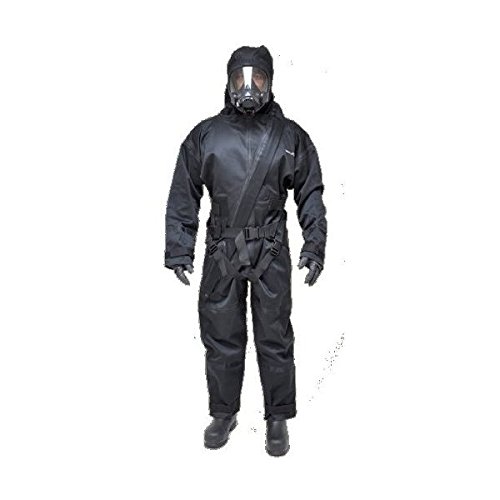Radiation Suit-500x500.jpg

I first heard about robotic suits around 1961 in a science fiction novel, Starship Troopers. The infantry in the novel wore metal suits that amplified their strength and protected them from harm. Over the years, a lot of money has been poured into exoskeletons which are pieces of equipment that can be strapped on the body to amplify strength. At the same time, protective suits against fire, chemicals and radiation have been under development. All of these ideas were seen in the popular movie Iron Man. Now a protective suit with strength amplifiers for use in nuclear power plants is being developed.
South West Nuclear Hub at Bristol University in the U.K. is collaborating with Sellafield Ltd, the company that manages the big nuclear facility in Cumbria to create a new type of protective suit for workers in radioactive environments. The Sellafield site receives most of the spent nuclear fuel from U.K. power reactors. It also contains many facilities that handle nuclear materials. Some of its facilities have been decommissioned. Decommissioning is a major problem confronting the global nuclear industry and Sellafield is always working on ways to improve decommissioning.
Currently, workers at Sellafield use air-fed PVC protective suits in areas where there is dangerous radioactivity. While this type of suit may be safe for the workers to use, it can only be worn a few hours at a time because it exposes the wearer to unhealthy heat stress. Now they are working on a suit like the one shown in the Iron Man movies and comic books. The suit would be made of composite materials to protect the wearer. In addition, it would incorporate wearable exoskeletons.
These new suits would minimize any physical stress on the worker wearing them. This would be advantageous when working in awkward or constrained positions that occur when in a confined space or when lifting heavy objects. The new composite materials of the suits would provide more protection against high radiation levels. They would also be much easier to decontaminate.
Professor Tom Scott is the project lead from the University of Bristol. He is also the co-director of the South West Nuclear Hub. He said, “Sellafield is one of the biggest nuclear decommissioning challenges in the world, predicted to last 100 years and costing tens of billions of pounds. Robotic and remotely-deployed technologies are already helping the Sellafield mission, but there will always be some cases where human workers are required to do hands on work in hazardous plant areas. Our wearable suit concept offers the prospect of major improvements in worker protection and enhanced ergonomic capabilities.”
Professor Scott and his collaborators are part of a consortium which includes National Nuclear Laboratory (NNL), DZP Technologies, Imitec and Lightricity. The collaboration was funded by the Sellafield Ltd under the Innovate U.K. project to research the feasibility of wearable technologies. The consortium is also researching eye movement tracking. It is hope that this will help detect fatigue in workers. Printed electronics to be incorporated in the suits are part of their research. Hand-mounted devices for better detection of radiation and nuclear materials are being studied.
Professor Scott said, "Our concept has comparisons with how space suits were developed in the 1950s," adds Professor Scott. "Space and nuclear are both safety-critical industries. Just as space suits enabled transformational outcomes, making it possible for humans to go into space, further development of our suit could result in game-changing improvements in decommissioning safety and performance at Sellafield. The suit could even be used at other nuclear decommissioning sites across the world, consistent with Government aims for the UK to be a global leader and established exporter of waste management and decommissioning markets solutions.”
A report on the work of the consortium will be delivered to Sellafield Ltd and Innovate U.K. in 2019. Following the delivery of the report, Sellafield will review the results and decide whether or not to proceed further, including the creation of a protype suit.